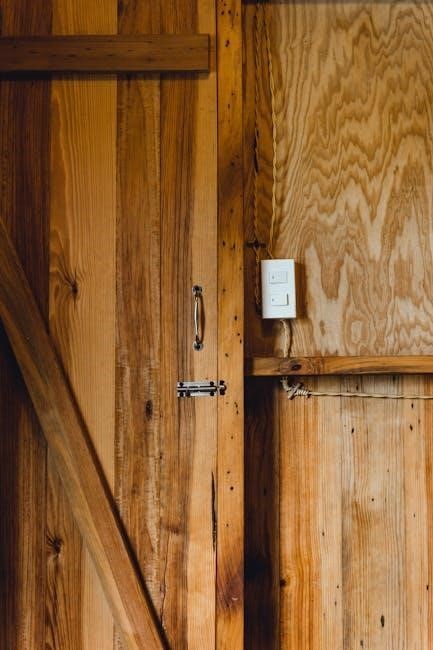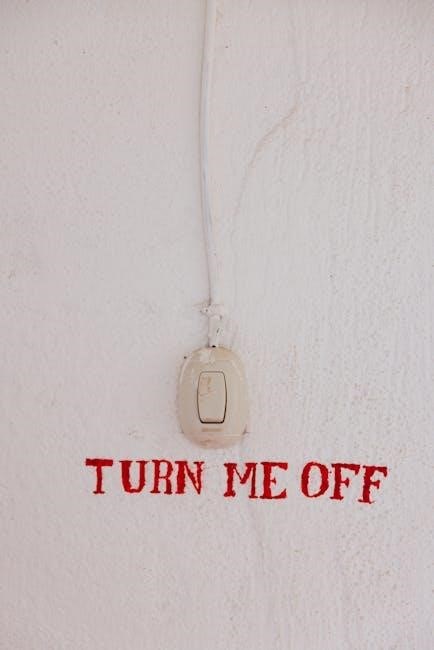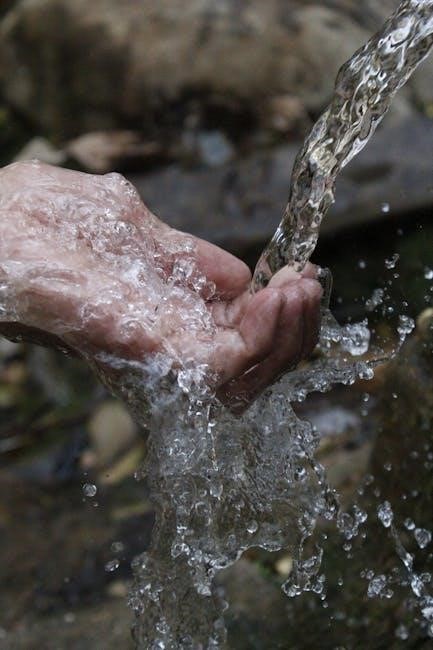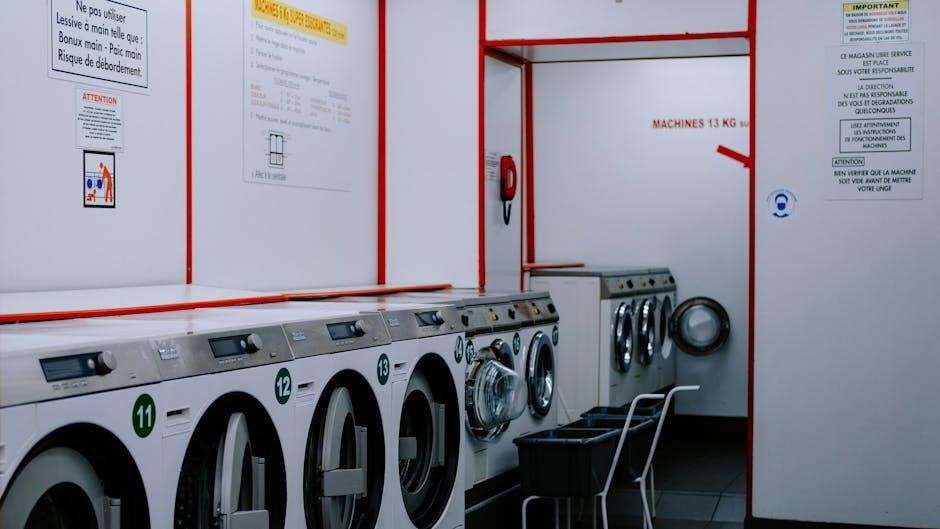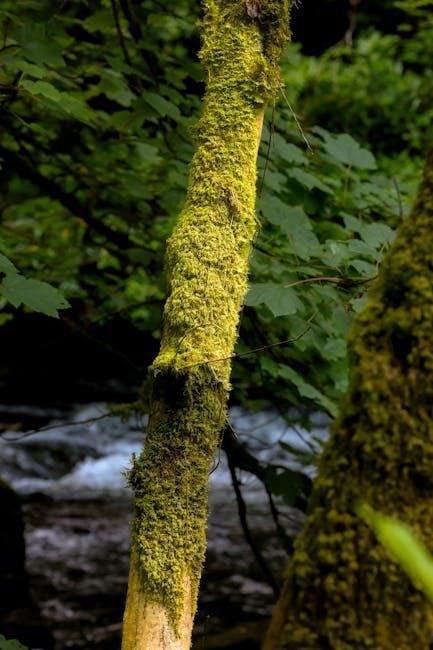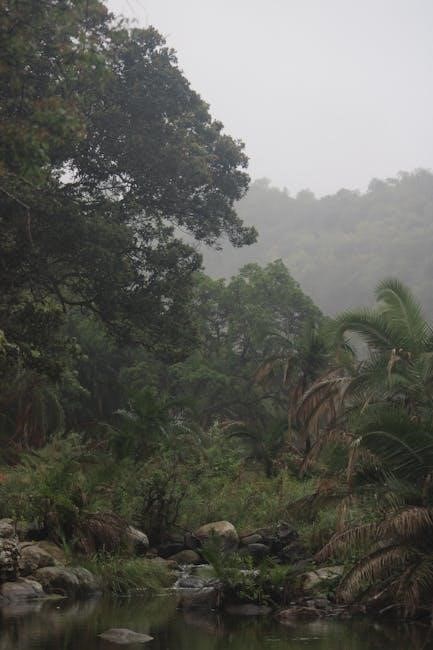
Product Overview

Stouffer’s Grandmas Chicken and Vegetable Rice Bake is a comforting, convenient meal inspired by a loyal fan’s family recipe, offering tender chicken, fluffy rice, and vibrant vegetables in a creamy cheese sauce․
1․1 Brief History of Stouffer’s Grandmas Chicken and Vegetable Rice Bake
Stouffer’s Grandmas Chicken and Vegetable Rice Bake was inspired by a loyal fan’s family recipe, capturing the essence of homemade comfort food․ Introduced as part of Stouffer’s Satisfying Servings line, it quickly gained popularity for its hearty, nostalgic appeal․ The dish combines tender white meat chicken, fluffy rice, peas, carrots, and a creamy cheese sauce, evoking memories of grandmother’s cooking․ Its creation reflects Stouffer’s commitment to delivering convenient, high-quality meals that taste homemade․ Over time, it has become a staple in many households, praised for its balanced flavors and ease of preparation․ This beloved casserole continues to be a favorite, offering a satisfying and comforting meal for families․
1․2 Key Features of the Dish
Stouffer’s Grandmas Chicken and Vegetable Rice Bake is a classic comfort food dish featuring tender white meat chicken, fluffy enriched long-grain rice, and a medley of peas and carrots․ The dish is smothered in a rich, creamy cheese sauce made with real cheddar cheese, ensuring a flavorful and satisfying meal․ It is seasoned with a blend of spices, including salt, pepper, and turmeric, enhancing its homemade taste․ The casserole is topped with crispy breadcrumbs, adding a delightful textural contrast․ This all-in-one meal is designed to be both nourishing and convenient, making it a perfect choice for busy families seeking a balanced and delicious dinner․ Its key features include high-quality ingredients, a hearty portion size, and a taste that resonates with traditional home-cooked meals․
1․3 Popularity and Consumer Feedback
Stouffer’s Grandmas Chicken and Vegetable Rice Bake is a beloved dish, praised for its comforting and nostalgic appeal․ Consumers often describe it as a “classic comfort food” that feels reminiscent of homemade meals․ Many appreciate its convenience, as it provides a balanced and satisfying meal with minimal effort․ The dish is particularly popular among busy families, who value its hearty portion size and flavorful profile․ Feedback highlights the tender chicken, creamy sauce, and crisp breadcrumb topping as standout features․ While some note it’s a bit indulgent, the overall consensus is positive, with many considering it a go-to option for cozy weeknight dinners or special gatherings․ Its ability to evoke a sense of warmth and familiarity has solidified its place as a fan favorite․
Ingredients and Nutritional Information
Stouffer’s Grandmas Chicken and Vegetable Rice Bake includes cooked enriched rice, white meat chicken, peas, carrots, and a creamy cheese sauce․ It contains allergens like wheat and soy․
2;1 List of Main Ingredients
Stouffer’s Grandmas Chicken and Vegetable Rice Bake features a blend of cooked enriched long grain rice, tender white meat chicken, peas, carrots, and a creamy cheese sauce․ Additional ingredients include skim milk, soybean oil, modified food starch, and breadcrumbs for texture․ The dish also contains cheddar cheese, chicken broth, and spices for flavor enhancement․ Allergens such as wheat, soy, and milk are present, making it essential for those with dietary restrictions to review the ingredient list․ The combination of these components ensures a balanced and flavorful meal, with the rice providing carbohydrates, chicken offering protein, and vegetables adding essential vitamins and minerals․ This dish is designed to be a hearty, comforting option for families and individuals seeking a convenient meal solution․
2․2 Nutritional Breakdown per Serving
Stouffer’s Grandmas Chicken and Vegetable Rice Bake provides approximately 17 grams of protein per serving, making it a satisfying option for families․ Each serving contains about 350 calories, with 14 grams of fat, 35 grams of carbohydrates, and 850mg of sodium․ The dish offers a balanced mix of macronutrients, with carbohydrates primarily from the rice and vegetables, and protein from the chicken․ It also contains small amounts of fiber and essential vitamins like iron and calcium․ The meal is designed to be both nourishing and flavorful, catering to a variety of dietary needs while maintaining a comforting, homemade taste․ This nutritional profile makes it a popular choice for quick, wholesome meals․
2․3 Allergens and Dietary Considerations
Stouffer’s Grandmas Chicken and Vegetable Rice Bake contains allergens such as wheat, milk, and soy, making it unsuitable for those with gluten intolerance or dairy allergies․ The dish includes wheat flour, breadcrumbs, and milk products like cheese and skim milk․ Additionally, soybean oil is present, which may concern those with soy allergies․ While the recipe does not include nuts, cross-contamination risks should be considered for sensitive individuals․ This product is not vegetarian due to the presence of chicken․ For those with dietary restrictions, alternatives like gluten-free or lactose-free versions would be necessary․ Always check the packaging for the most accurate allergen information, as formulations may change․ This dish is best suited for individuals without severe food allergies or specific dietary preferences․
Cooking Instructions
Preheat oven to 350°F․ Place tray on baking sheet, center rack․ Cook 45 minutes․ Let stand 1 minute․ For microwave, vent film, cook 8 minutes on high․
3․1 Oven Cooking Method
For the oven cooking method, preheat your oven to 350°F (175°C)․ Place the frozen tray of Stouffer’s Grandmas Chicken and Vegetable Rice Bake on a baking sheet, ensuring it is centered on the rack․ Do not vent or remove the film covering the tray․ Cook for 45 minutes, allowing the dish to heat evenly․ After cooking, let it stand for 1 minute before serving․ This method ensures a crispy topping and a thoroughly heated meal․ Always follow the package instructions for precise cooking times and temperatures to achieve the best results․ Proper cooking ensures food safety and optimal flavor․

3․2 Microwave Cooking Method
For a quicker cooking option, the microwave method is ideal․ Leave the film covering the tray intact but cut a small slit to vent․ Place the tray in the microwave and cook on high for 8 minutes․ After cooking, carefully remove the tray and uncover it․ Return it to the microwave and cook for an additional 2 minutes on high to ensure the top is crispy․ Let the dish stand for 1-2 minutes before serving to allow the heat to distribute evenly․ Always check that the meal is hot and steaming before consumption․ Note that microwave power levels can vary, so adjust cooking times as needed for your specific appliance․ This method provides a convenient and fast way to enjoy a perfectly cooked meal․
3․3 Step-by-Step Guide for Perfect Results

To achieve the best results when cooking Stouffer’s Grandmas Chicken and Vegetable Rice Bake, follow these simple steps․ Preheat your oven to 350°F (175°C)․ Place the frozen dish on a baking sheet, leaving the film intact to prevent splattering․ Cook for 45 minutes, then remove the film and continue cooking for an additional 10-15 minutes, or until the top is golden brown and the dish is hot and bubbly․ Remove from the oven and let it stand for 5 minutes before serving․ This ensures the flavors meld together and the dish cools slightly for safe serving․ Always use oven mitts when handling hot dishes, and check that the center is steaming hot to confirm it’s fully cooked․ This method guarantees a perfectly cooked, satisfying meal every time․
3․4 Tips for Even Cooking
For even cooking, ensure the oven is preheated to the recommended temperature (350°F) before placing the dish inside․ Use a baking sheet to catch any overflow and prevent mess․ Avoid overcrowding the oven, as this can disrupt airflow and lead to uneven heating․ If cooking in the microwave, vent the film to allow steam to escape and prevent sauce from pooling unevenly․ Rotate the dish halfway through cooking to ensure uniform heating․ After cooking, let the dish stand for a few minutes to allow the heat to distribute evenly․ Always check the center for doneness, as edges may cook faster․ These tips help achieve a perfectly cooked, golden-brown top and a consistent texture throughout the dish․

Serving Suggestions
Serve with steamed green beans and a fresh salad for a balanced meal․ Pair with warm dinner rolls for added comfort and a cozy dining experience․
4․1 Recommended Side Dishes
For a well-rounded meal, pair Stouffer’s Grandmas Chicken and Vegetable Rice Bake with steamed green beans, offering a fresh contrast to the rich, savory casserole․ A simple green salad with mixed greens, cherry tomatoes, and a light vinaigrette adds a refreshing touch․ Additionally, warm dinner rolls or garlic bread complement the dish perfectly, providing a satisfying crunch and helping to soak up the creamy sauce․ These sides enhance the comforting flavors of the casserole while ensuring a balanced and satisfying dining experience․
4․2 Presentation Ideas
To elevate the presentation of Stouffer’s Grandmas Chicken and Vegetable Rice Bake, consider garnishing it with fresh parsley or chives for a pop of color․ Use a serving spoon to create neat portions, ensuring each scoop includes a mix of chicken, rice, and vegetables․ Transfer the casserole to a decorative serving dish or platter for a more appealing look․ Sprinkle grated cheese on top for an extra touch of flavor and visual appeal․ Pair it with a side of steamed vegetables or a green salad, arranged artfully on the plate․ For a cozy family dinner, serve it straight from the baking dish, allowing everyone to help themselves․ This approach maintains the comforting, homemade feel of the meal while keeping the presentation simple yet inviting․
4․3 Pairing with Beverages
Stouffer’s Grandmas Chicken and Vegetable Rice Bake pairs perfectly with a variety of beverages to enhance its comforting flavors․ For a refreshing option, try pairing it with a glass of iced tea or fresh lemonade, which complement the dish’s savory and slightly cheesy notes․ Sparkling water with a squeeze of lemon can cleanse the palate between bites․ For a more indulgent choice, a dry white wine or light beer pairs nicely, balancing the richness of the meal․ Alternatively, a glass of fresh fruit juice or chilled milk adds a creamy contrast․ For a cozy evening, a warm cup of herbal tea or hot cocoa complements the dish’s comforting vibe․ These beverage options elevate the dining experience, making it a satisfying and enjoyable meal․

Variations and Substitutions
Stouffer’s Grandmas Chicken and Vegetable Rice Bake can be customized to suit dietary preferences․ Opt for a vegetarian version by swapping chicken with plant-based protein, or choose gluten-free by substituting breadcrumbs․ For a low-fat option, reduce cheese and use leaner ingredients․ These tweaks maintain flavor while catering to diverse needs․
5․1 Vegetarian Alternative
For a vegetarian version of Stouffer’s Grandmas Chicken and Vegetable Rice Bake, replace the chicken with plant-based protein like tofu, tempeh, or seitan․ Marinate and cook these substitutes before mixing with rice, vegetables, and cheese sauce․ Use vegetable broth instead of chicken broth for added flavor․ Ensure the cheese sauce is vegetarian by checking the ingredients or using a plant-based alternative․ This adaptation maintains the dish’s creamy, hearty texture while catering to vegetarian diets․ Adjust cooking time slightly, as plant-based proteins may require less time to cook through․ The result is a satisfying, balanced meal that aligns with vegetarian preferences․
5․2 Gluten-Free Option
To create a gluten-free version of Stouffer’s Grandmas Chicken and Vegetable Rice Bake, substitute gluten-containing ingredients like breadcrumbs with gluten-free alternatives․ Use gluten-free breadcrumbs made from rice, corn, or gluten-free flours․ Ensure the cheese sauce and broth are gluten-free by checking labels or using homemade versions․ Replace wheat flour with gluten-free flour blends if making the sauce from scratch․ Cook the dish as instructed, adjusting for any differences in cooking times due to gluten-free ingredients․ This adaptation allows those with gluten intolerance or sensitivity to enjoy the same hearty, flavorful meal․ Always verify the gluten-free status of all ingredients to ensure safety and quality․

5․3 Low-Fat Version
For a low-fat version of Stouffer’s Grandmas Chicken and Vegetable Rice Bake, consider reducing or substituting high-fat ingredients․ Use low-fat cheese instead of regular cheddar and opt for leaner chicken breast․ Replace heavy cream with half-and-half or a non-dairy milk alternative․ Reduce the amount of soybean oil and chicken fat, or omit them entirely․ Breadcrumbs can be skipped or replaced with a light dusting of gluten-free, low-fat crumbs․ Cook the dish in the oven to avoid added fats from frying․ Season generously with spices and herbs to maintain flavor without extra calories․ This version retains the dish’s comforting essence while offering a healthier, lower-fat alternative․ Ensure all substitutions align with your dietary goals for a guilt-free meal․
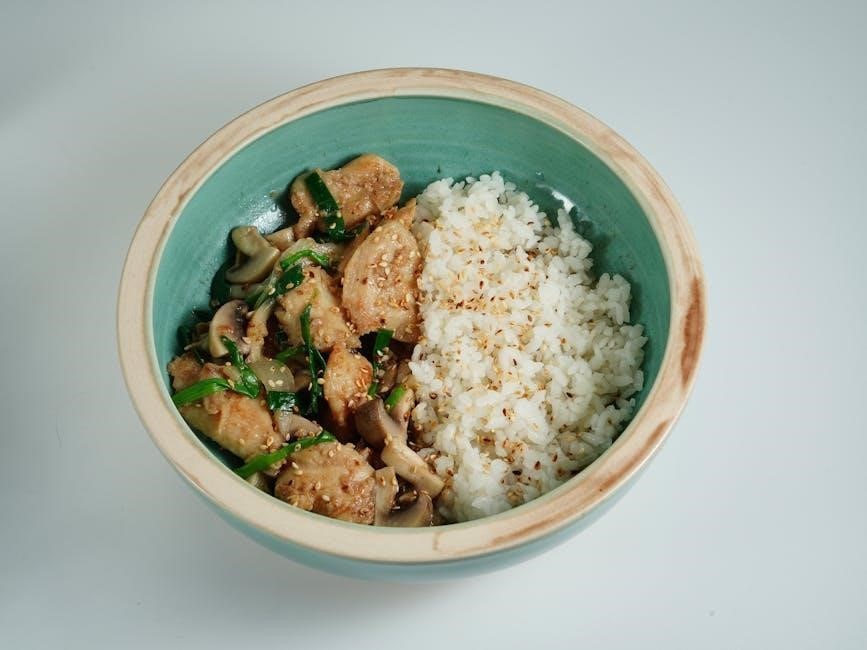
Make-Ahead and Storage Tips
For make-ahead convenience, prepare the casserole up to a day in advance and refrigerate at 40°F or below․ Freeze for up to 3 months in an airtight container․
6․1 Refrigeration Guidelines
Refrigerate Stouffer’s Grandmas Chicken and Vegetable Rice Bake at 40°F or below within two hours of cooking․ Store in an airtight container to maintain freshness and prevent moisture absorption․ Consume refrigerated leftovers within 3 days for optimal quality․ If freezing, ensure the dish is sealed tightly and stored at 0°F for up to 3 months․ When reheating, make sure the internal temperature reaches 165°F for food safety․ Always check for signs of spoilage, such as unusual odors or mold, before reheating․ For thawing, place the frozen dish in the refrigerator overnight or submerge in cold water․ Proper refrigeration and storage help preserve the dish’s flavor and texture, ensuring a delicious meal whenever you’re ready․
6․2 Freezing Instructions
To freeze Stouffer’s Grandmas Chicken and Vegetable Rice Bake, ensure the dish is completely cooled to room temperature to prevent ice crystal formation․ Transfer the cooled casserole to an airtight, freezer-safe container or heavy-duty freezer bag, removing as much air as possible before sealing․ Label the container with the date and contents․ Store in the freezer at 0°F or below for up to 3 months․ For best quality, consume within 2 months․ When ready to eat, thaw overnight in the refrigerator or reheat directly from frozen, adjusting cooking time as needed․ Ensure the internal temperature reaches 165°F for food safety․ Freezing helps preserve the dish’s flavors and textures, making it a convenient option for future meals․ Always check for signs of spoilage before reheating․
6․3 Reheating Methods
To reheat Stouffer’s Grandmas Chicken and Vegetable Rice Bake, preheat your oven to 350°F (175°C)․ Place the dish in a covered, oven-safe container to retain moisture and heat evenly․ Reheat for 20-25 minutes, or until the internal temperature reaches 165°F (75°C)․ For a crisper top, remove the cover during the last 5 minutes․ Alternatively, reheat in the microwave by placing the dish in a microwave-safe container, covering it with a paper towel to prevent splattering․ Heat on high for 3-4 minutes, checking and stirring if needed, until hot and steaming․ Ensure the dish is airtight if refrigerated before reheating․ Always check for any signs of spoilage before consuming․ Proper reheating ensures food safety and maintains the dish’s flavor and texture․
Common Mistakes to Avoid
Overcooking can dry out the chicken, while incorrect temperature settings may lead to uneven heating․ Improper thawing techniques can affect texture and consistency, so always follow instructions carefully․
Overcooking is a common mistake that can make the dish dry and unappetizing․ The chicken may become tough, and the rice can harden, losing its fluffy texture․ To avoid this, always follow the recommended cooking time and temperature․ For oven cooking, ensure the dish is removed promptly after 60-75 minutes, as specified․ In the microwave, monitor the cooking progress to prevent overcooking․ If the dish is left to stand too long after cooking, it may also dry out․ Properly timing the cooking process and letting it rest briefly will help maintain the dish’s moisture and flavor․ Be attentive during the cooking process to achieve the best results․ Incorrect temperature settings can significantly affect the quality of the dish․ Cooking at too low a temperature may result in undercooked rice and chicken, while too high a temperature can cause the top to burn before the interior is fully cooked․ For oven cooking, preheating to the correct temperature (usually 350-375°F) is crucial․ In the microwave, ensure the wattage matches the recommended settings (typically 1100 Watts)․ Using the wrong temperature can lead to uneven cooking, with some parts overcooked and others undercooked․ Always refer to the package instructions for precise temperature guidelines․ Proper temperature control ensures the dish cooks evenly, maintaining its creamy texture and flavor․ Avoid guessing; use a thermometer if needed, and adjust settings as specified for best results․ Improper thawing techniques can lead to uneven cooking and food safety issues․ Never thaw frozen dishes at room temperature, as this can allow bacteria to grow․ Instead, thaw the Stouffer’s Grandmas Chicken and Vegetable Rice Bake in the refrigerator overnight․ If you forget to thaw, cook it directly from the freezer but increase the cooking time by about 50%․ Avoid microwaving for thawing, as it can cause the edges to cook prematurely while the center remains frozen․ Always follow the package instructions for safe thawing and cooking practices․ Proper thawing ensures even cooking and maintains the dish’s texture and flavor․ Common issues include undercooked rice, uneven sauce consistency, and burnt toppings․ Adjust cooking time, stir sauce thoroughly, and cover with foil to prevent burning․ If the rice is undercooked, cover the dish with foil and return it to the oven at 350°F for an additional 10-15 minutes․ Check periodically to ensure the rice doesn’t overcook․ Alternatively, add a splash of water or chicken broth to the dish and microwave on high for 2-3 minutes, then stir and check․ Avoid overmixing, as this can make the rice mushy․ If using the microwave, ensure the rice is evenly distributed to promote consistent cooking․ For best results, follow the package instructions for cooking times and liquid ratios to achieve perfectly cooked rice every time․ If the sauce is too thick, add a small amount of water or chicken broth (1-2 tablespoons at a time) and stir gently to avoid disrupting the layers․ If the sauce is too thin, cover the dish and cook for an additional 5-10 minutes to allow it to thicken naturally․ For a creamier texture, mix in a splash of milk or cream before reheating․ Ensure the dish is heated through after adjustments to maintain flavor consistency․ Avoid over-stirring, as this can affect the dish’s texture; Always check the sauce before serving and adjust as needed to achieve your desired consistency․ This ensures the dish remains flavorful and satisfying․
To prevent the topping from burning, ensure the oven rack is in the center position, avoiding direct heat from the top element․ Cover the dish with foil during the initial cooking phase, removing it only for the last 10-15 minutes to allow browning․ If using the microwave, avoid overheating, as this can cause uneven cooking․ Keep an eye on the dish during the final cooking stages, especially when adding breadcrumbs or cheese on top․ If necessary, reduce the oven temperature by 25°F (15°C) to slow browning․ Properly venting the dish and using lower heat settings can also help maintain a golden, even crust without burning․ This ensures a perfectly cooked meal every time․ Stouffer’s Grandmas Chicken and Vegetable Rice Bake is a timeless, comforting dish that combines tender chicken, flavorful rice, and vibrant vegetables in a creamy cheese sauce․ Its convenience and delicious taste make it a favorite for busy families and cozy gatherings․ With clear cooking instructions for both oven and microwave, achieving a perfectly cooked meal is straightforward․ By following the tips for preventing burnt toppings and ensuring even cooking, you can enjoy a golden, cheesy crust every time․ This dish is not only satisfying but also customizable, allowing you to add your own touches for a personalized meal․ Whether you’re a fan of the original or looking to try a new comfort classic, Stouffer’s Grandmas Chicken and Vegetable Rice Bake delivers a hearty, homestyle experience․7․1 Overcooking the Dish
7․2 Incorrect Temperature Settings
7․3 Improper Thawing Techniques

Troubleshooting
8․1 Fixing Undercooked Rice
8․2 Adjusting Consistency of Sauce
8․3 Preventing Burnt Topping




